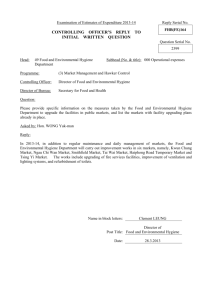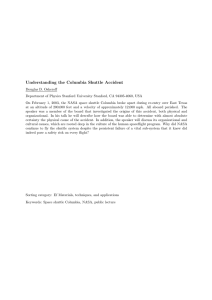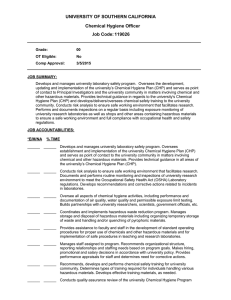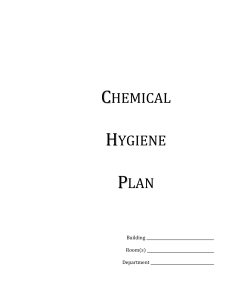The new culture of safety, Chapter 1, “Prudent Practices…,” p. 1320 Carl Steele (17741786) reported the taste and odor of acids including HF, H Introduction
advertisement
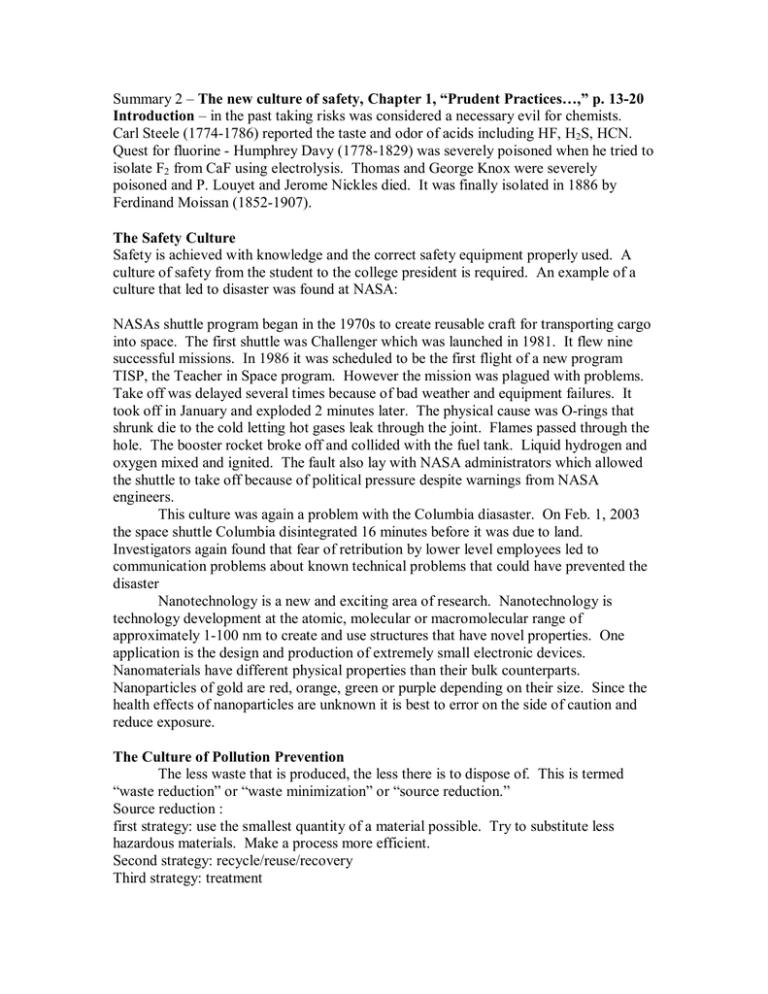
Summary 2 – The new culture of safety, Chapter 1, “Prudent Practices…,” p. 13­20 Introduction – in the past taking risks was considered a necessary evil for chemists. Carl Steele (1774­1786) reported the taste and odor of acids including HF, H2S, HCN. Quest for fluorine ­ Humphrey Davy (1778­1829) was severely poisoned when he tried to isolate F2 from CaF using electrolysis. Thomas and George Knox were severely poisoned and P. Louyet and Jerome Nickles died. It was finally isolated in 1886 by Ferdinand Moissan (1852­1907). The Safety Culture Safety is achieved with knowledge and the correct safety equipment properly used. A culture of safety from the student to the college president is required. An example of a culture that led to disaster was found at NASA: NASAs shuttle program began in the 1970s to create reusable craft for transporting cargo into space. The first shuttle was Challenger which was launched in 1981. It flew nine successful missions. In 1986 it was scheduled to be the first flight of a new program TISP, the Teacher in Space program. However the mission was plagued with problems. Take off was delayed several times because of bad weather and equipment failures. It took off in January and exploded 2 minutes later. The physical cause was O­rings that shrunk die to the cold letting hot gases leak through the joint. Flames passed through the hole. The booster rocket broke off and collided with the fuel tank. Liquid hydrogen and oxygen mixed and ignited. The fault also lay with NASA administrators which allowed the shuttle to take off because of political pressure despite warnings from NASA engineers. This culture was again a problem with the Columbia diasaster. On Feb. 1, 2003 the space shuttle Columbia disintegrated 16 minutes before it was due to land. Investigators again found that fear of retribution by lower level employees led to communication problems about known technical problems that could have prevented the disaster Nanotechnology is a new and exciting area of research. Nanotechnology is technology development at the atomic, molecular or macromolecular range of approximately 1­100 nm to create and use structures that have novel properties. One application is the design and production of extremely small electronic devices. Nanomaterials have different physical properties than their bulk counterparts. Nanoparticles of gold are red, orange, green or purple depending on their size. Since the health effects of nanoparticles are unknown it is best to error on the side of caution and reduce exposure. The Culture of Pollution Prevention The less waste that is produced, the less there is to dispose of. This is termed “waste reduction” or “waste minimization” or “source reduction.” Source reduction : first strategy: use the smallest quantity of a material possible. Try to substitute less hazardous materials. Make a process more efficient. Second strategy: recycle/reuse/recovery Third strategy: treatment Last resort: disposal Changes in the Legal and Regulatory Climate OSHA (Occupational Safety and Health Administration) established health and safety standards to protect laboratory workers – 29 CFR 1910.1450 (interestingly OSHA laboratory standards do not protect students!). It limits exposure to the specific permissible exposure level (PEL) It designates that the Chemical Hygiene Officer (CHO) is the employee who is qualified by training or experience to provide technical guidance in the development and implementation of the Chemical Hygiene Plan (CHP). The Chemical Hygiene Plan is a written program developed and used by the employer which sets forth procedures, equipment, personal protective equipment and work practices that protect employees from health hazards presented by hazardous chemicals. The chemical hygiene plan is reviewed once a year. It should be: 1. Capable of protecting employees from health hazards associated with hazardous chemicals and keeping exposure below permissible limits. 2. To assure protection it should include standard operating procedures relevant to health considerations. The criteria to reduce employee exposure to hazardous chemicals include engineering controls (fume hoods), personal protective equipment and hygiene practices 3. It must include provisions for employee information (it must be available) 4. It must include provisions for medical examinations 5. It must include procedures for safe removal of contaminated waste 6.It must include decontamination procedures 7. It must include employee information and training Suggested Components: 1. Basic Rules and Procedures 2. Chemical Procurement, Distribution and Storage 3. Environmental Monitoring 4. Housekeeping, Maintenance and Inspections 5. Medical Program 6. Personal Protective Apparel and Equipment 7. Records 8. Signs and Labels 9. Spills and Accidents 10. Training and Information 11. Disposal City Tech’s Chemical Hygiene Plan is available on this website Material Safety Data Sheet (MSDS) – a document which contains relevant information about a material. A 16­section format has been established by ANSI (American National Standards Institute).




